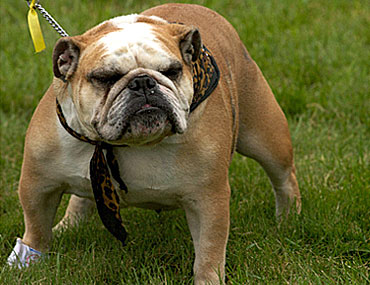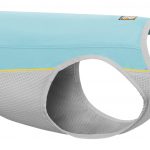Hip Dysplasia in Bulldogs

Hip Dysplasia is a common joint disease in Bullies. It is a development disorder that affects the hip joint and stems from an imbalance in muscle mass that is centered on the hip joint. Hip Dysplasia is a degenerative disease that can become very painful. In order to restore the quality of life for your fur-kid, surgery or hip replacement may be necessary.
Symptoms of Hip Dysplasia
Your fur-kid may show symptoms such as a hesitation to climb stairs, reluctance to jump or rise from the rear legs or exhibit abnormal locomotion in the area. Any hesitation to activities that require your fur-kid to place pressure or weight on their hips will alert pet parents that there is discomfort in the hip area.
Genetics and Heredity of Hip Dysplasia
Several genes contribute to the ultimate size, strength, shape and growth potential of your fur-kid’s hip joint. Your fur-kid may have inherited this condition from their parents and ancestors, with each generation passing down to the next. The severity of the condition is largely determined by the number of disease-related genes present in your fur-kid.
Environmental Factors
While environmental factors don’t directly cause hip dysplasia it can affect to what degree the condition will eventually manifest into. Genetics plays a large role and can’t be controlled, however taking preventative measures such as helping your fur-kid maintain a healthy weight and providing a low calorie diet from a young age is beneficial in lessening the severity of canine hip dysplasia. Many pet parents may wonder how a healthy diet can help prevent the disease from worsening. Helping your fur-kid maintain a healthy weight is highly important. Overweight Bullies will put more strain and stress on their hip, causing the symptoms and the disease itself to progress and worsen. Eating a healthy diet continuously maintains a healthy weight, therefore providing your precious fur-baby with the same amount of weight pressing on the joints.
Treatments
The veterinarian will determine and diagnose the severity of the joint disease, then follow up with a solution for treatment. At times, many veterinarians will choose to begin with a prescription drug therapy that helps relieve pain and controls clinical signs. The medical management treatment is focused on slowing the progress of the disease and reducing the cartilage wear. Medical management usually includes medication prescribed by the veterinarian which includes anti-inflammatory, non-steroidal medications and chondropprotective agents. When medication is no long controlling the disease, the veterinarian will recommend surgery as a long-term solution. There are two types of surgery the veterinarian will recommend. Depending on the severity and specific affect the disease has your fur-kid, Triple Pelvic Osteotomy or total hip replacement will be recommended.
At the first sign of symptoms, bring your adorable fur-kid to the veterinarian for proper diagnosis and treatment recommendations. The sooner you are able to start treating the disease, the better chance there is to lessening the progression of it. Always follow the veterinarian’s recommendations and seek a second opinion before agreeing to surgical procedures. Proper treatment will provide your fur-kid with the ability to live a happy life.

































